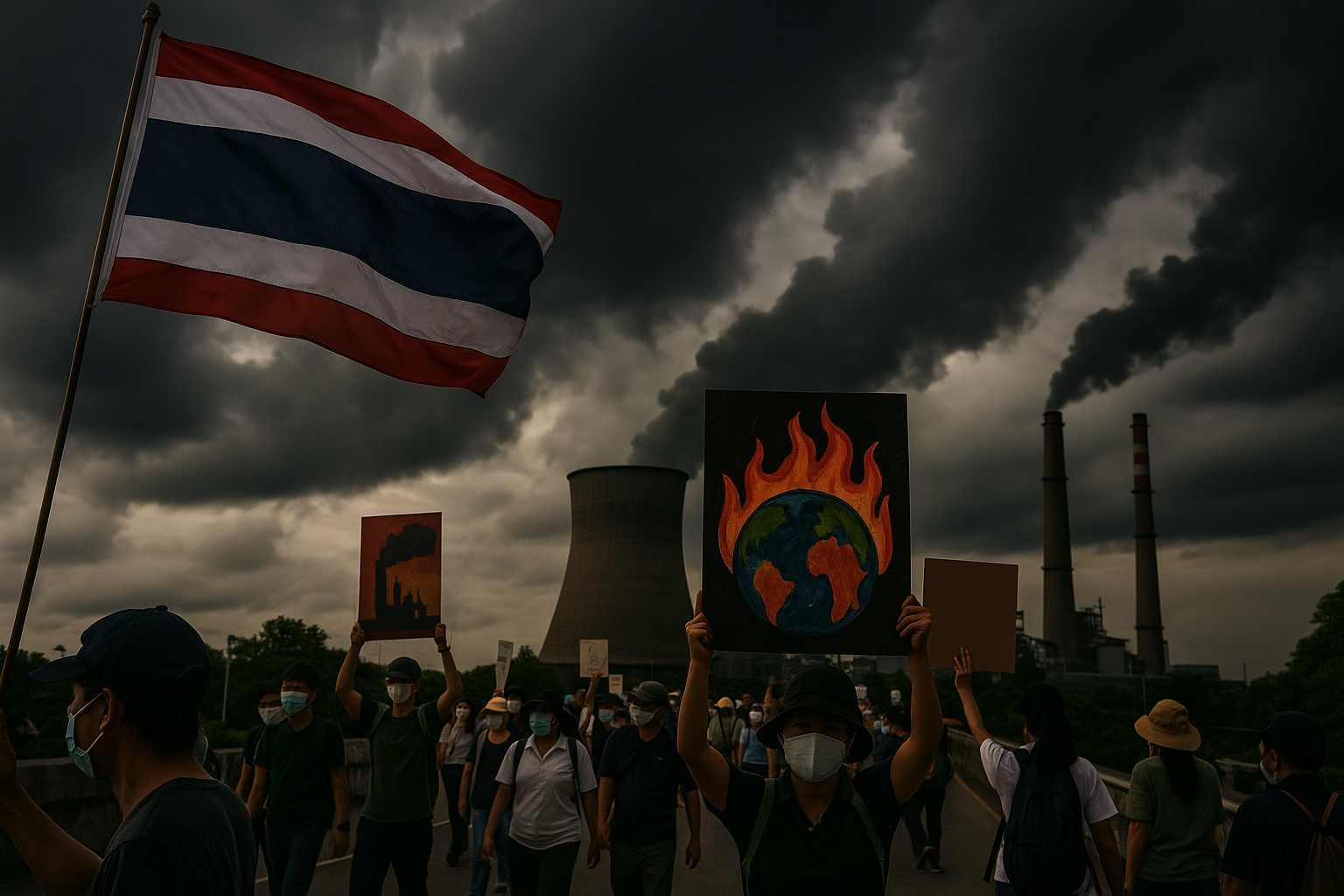Thailand’s Climate Goals at Risk Amid Massive Funding Shortfall, Warns ADB
Between 2018 and 2024, Thailand mobilized $47 billion in climate finance, heavily concentrated in energy and transport, while adaptation sectors received less than 1% of funding. ADB warns the country faces an annual $11–17 billion investment gap to meet 2030–2050 climate targets, urging a coordinated five-pillar strategy to bridge it.

Thailand’s climate finance journey has reached a decisive point, with achievements and persistent gaps shaping its path toward ambitious net-zero goals. A landmark assessment by the Asian Development Bank (ADB), drawing on research inputs from the United Nations Framework Convention on Climate Change, the International Monetary Fund, and the World Bank, has for the first time mapped the scale, sources, and uses of climate finance flowing into the country’s nationally determined contribution (NDC) sectors. From 2018 to 2024, Thailand mobilized about B1.6 trillion ($47 billion) in climate mitigation investments, with the energy and transport sectors alone taking nearly two-thirds of the total. The energy sector absorbed 48% of funds, directed toward renewable generation, energy efficiency, and electric mobility projects, while transport claimed 16%, investing heavily in rail networks, electric vehicles, and related infrastructure. In sharp contrast, adaptation, covering water resource management, agriculture, disaster resilience, and biodiversity, received less than 1% of funding, a critical shortfall for a nation highly exposed to floods, droughts, and rising sea levels.
Who is Funding Thailand’s Climate Efforts?
The report reveals that corporate players and commercial banks dominate Thailand’s climate finance landscape, contributing more than 60% of total flows. Corporations alone committed nearly B717 billion ($21.1 billion), while commercial banks provided B324 billion ($9.5 billion). The government and state-owned enterprises together supplied around B508 billion, and multilateral and development finance institutions, alongside impact investors, contributed only about 3%. In terms of funded activities, solar photovoltaic installations topped the list at B276.4 billion ($8 billion), followed by green hydrogen development at B232 billion ($6.8 billion), rail and electric transport at B137.8 billion ($4 billion), electric vehicles at B117.7 billion ($3.4 billion), and wastewater treatment with methane recovery at B64 billion ($1.9 billion). These investments have been encouraged by supportive policy tools such as the Thailand Taxonomy and the Securities and Exchange Commission’s guidance on green and sustainability-linked bonds, as well as international trade mechanisms like the European Union’s Carbon Border Adjustment Mechanism, which is nudging exporters toward cleaner production.
A Gap That Could Derail Net-Zero Targets
While progress is evident, the ADB’s analysis underscores a serious challenge: current climate finance flows are only meeting about half of Thailand’s estimated annual need for the period 2030–2050. The country will require between $22 billion and $28 billion annually to stay aligned with its NDCs and net-zero commitments, leaving an annual shortfall of $11 billion–$17 billion. Sector-by-sector analysis shows that the energy sector’s current $4 billion per year falls well short of the $8 billion needed, while transport’s $2.5 billion will have to more than double to $6 billion. Agriculture’s annual allocation of just over $1 billion needs to climb to around $3.5 billion, and industry’s $1.5 billion must rise above $4 billion. Forestry faces a gap of up to $1.35 billion annually, and waste management will need to nearly double its current $0.5 billion to about $1 billion. Without urgent and substantial investment increases, these deficits could jeopardize Thailand’s ability to meet its international climate commitments.
The Five-Pillar Roadmap for Closing the Gap
To bridge the divide, the report proposes a coordinated five-pillar strategy. First, catalytic finance mechanisms are needed to de-risk green infrastructure and industrial transition projects by blending concessional or grant funding with private capital, making large-scale ventures like wind farms, EV charging networks, and climate-resilient agricultural systems financially viable. Second, expanding green capital markets through instruments such as green bonds and sustainability-linked loans could tap into global pools of institutional and retail investors seeking ESG-aligned assets. Third, building strong institutional capacity is crucial to ensure effective coordination, efficient fund allocation, and rigorous project monitoring. Fourth, clear project selection frameworks and robust public–private partnership models should be established to direct resources toward initiatives with the highest impact and alignment with national climate goals. Finally, creating a national climate finance repository would provide a centralised hub for tracking public budgets, private investments, and international grants, reducing fragmentation and improving transparency.
From Incremental Gains to a Unified National Strategy
While Thailand’s NDC Action Plan provides a solid framework, the country has made notable progress, especially in mitigation through energy and transport. However, fragmented governance, siloed sectoral efforts, and the absence of a unified financing strategy are slowing momentum. Bridging the annual $10 billion-plus financing gap will require political will, systemic coordination, and bold financial innovation to unlock both institutional and private capital. Strengthening the authority of the Department of Climate Change and Environment across implementing agencies, aligning sectoral goals with funding mechanisms under a unified national strategy, and enhancing finance tracking systems will be critical. Financial institutions must also adopt stronger disclosure practices to clarify the flow of green finance. Scaling up blended finance, using public funds to leverage private capital, will be key to attracting investment into high-impact but currently underfunded areas, such as adaptation, agriculture, and forestry. If these measures are pursued decisively, Thailand can shift from gradual advances to a comprehensive, inclusive, and accelerated transition toward a low-carbon, climate-resilient future that not only meets its international obligations but also safeguards the nation’s economic stability in the face of climate change.
- FIRST PUBLISHED IN:
- Devdiscourse
ALSO READ
Diplomatic Push in Southeast Asia: U.S. Efforts to Broker Cambodia-Thailand Peace
ASEAN Diplomatic Push: Thailand-Cambodia Border Dispute Talks in Malaysia
Safe Havens for Pets Amid Thailand-Cambodia Border Conflict
Cambodia-Thailand Border Talks Seek Ceasefire
World Bank's Continued Commitment to Climate Change and Gender in the Pacific










